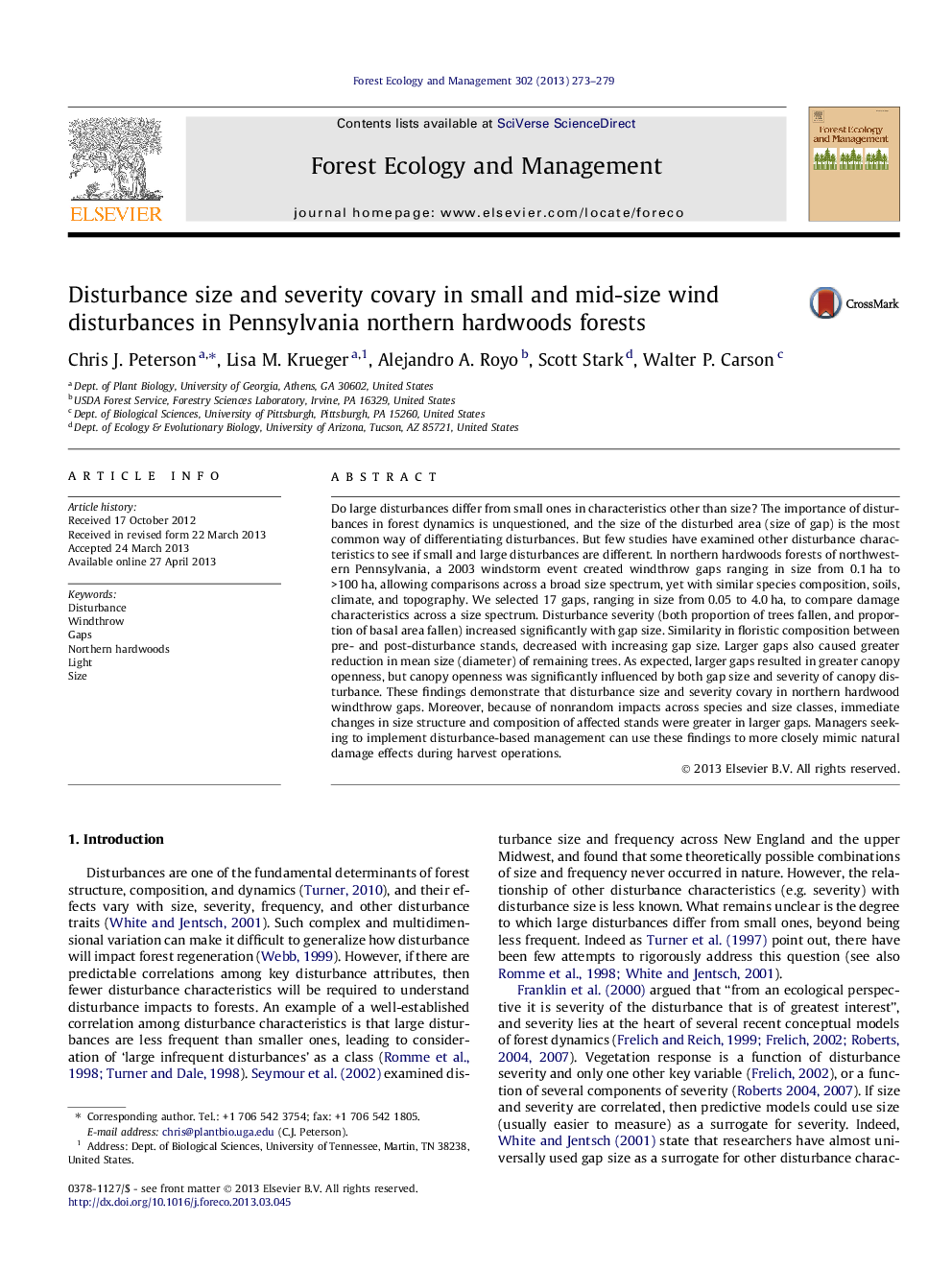| Article ID | Journal | Published Year | Pages | File Type |
|---|---|---|---|---|
| 87077 | Forest Ecology and Management | 2013 | 7 Pages |
•We examine the relationship between wind disturbance size and severity in 17 gaps.•Pre- to post-disturbance species similarity decreased with increasing gap size.•Canopy openness was best predicted by considering both gap size and severity.•Disturbance gap size and severity were positively correlated.•This work provides natural ranges of severity for small to medium sized gaps.
Do large disturbances differ from small ones in characteristics other than size? The importance of disturbances in forest dynamics is unquestioned, and the size of the disturbed area (size of gap) is the most common way of differentiating disturbances. But few studies have examined other disturbance characteristics to see if small and large disturbances are different. In northern hardwoods forests of northwestern Pennsylvania, a 2003 windstorm event created windthrow gaps ranging in size from 0.1 ha to >100 ha, allowing comparisons across a broad size spectrum, yet with similar species composition, soils, climate, and topography. We selected 17 gaps, ranging in size from 0.05 to 4.0 ha, to compare damage characteristics across a size spectrum. Disturbance severity (both proportion of trees fallen, and proportion of basal area fallen) increased significantly with gap size. Similarity in floristic composition between pre- and post-disturbance stands, decreased with increasing gap size. Larger gaps also caused greater reduction in mean size (diameter) of remaining trees. As expected, larger gaps resulted in greater canopy openness, but canopy openness was significantly influenced by both gap size and severity of canopy disturbance. These findings demonstrate that disturbance size and severity covary in northern hardwood windthrow gaps. Moreover, because of nonrandom impacts across species and size classes, immediate changes in size structure and composition of affected stands were greater in larger gaps. Managers seeking to implement disturbance-based management can use these findings to more closely mimic natural damage effects during harvest operations.
